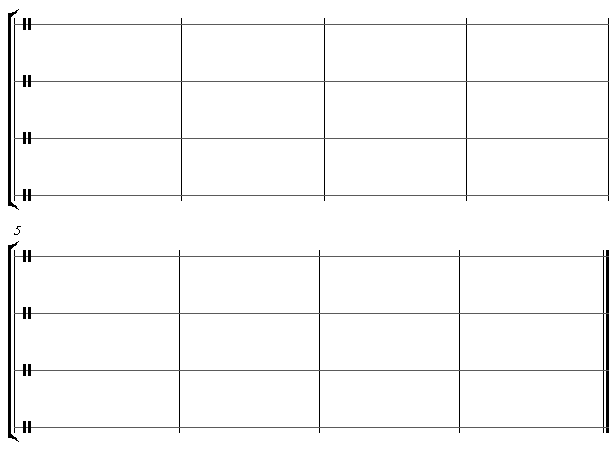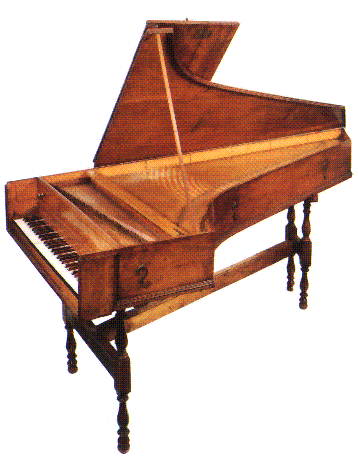Activity 1
In a group of four, take a line each and play through this 8 bar piece.
When you have finished, swap parts three more times. At the end you
should have played all the parts.
Choose a different sounding instrument for each part. For example
:
PART 1 : Triangle
PART 2 : High drum
PART 3 : Low drum
PART 4 : Wood block
This is a CANON. We looked at canons in the last lesson. This one is a 4 part canon. Count your empty bars carefully.
Make sure that you are all playing at the same speed before you start. To help you do this, click on the button to hear a beat played at 100 BPM

Activity 2
To make your music a little more interesting, we will now add dynamics. This means changing the loudness of the notes.
The hairpin makes the music go gradually louder or quieter.
This means gradually getting louder

This means gradually getting quieter

The letter p means play quietly
The letter f means play loudly

Now make up a 4 part canon for 8 bars (just like activity 1). This time include dynamics - but not too many!

Ask your teacher/parent to check your music. Before you play it, ask yourself the following questions :
- Does each bar contain 4 beats?
- Do the dynamics (loud and quiet parts) make sense?
- Is this a canon?
Information
The letters you have learnt today are p meaning
quiet and f meaning loud. These stand for the
Italian words
piano and forte, the Italian words
for 'quiet' and 'loud'.
Around 1709, an Italian called Cristifori invented a keyboard
instrument that was able to play loudly and quietly, depending on how hard
you pressed the keys. The keys were linked to small wooden hammers
covered in felt which would hit the strings. This was different to
the traditional Baroque keyboard instrument, the harpsichord, in which
the strings were plucked by small hooks. The harpsichord was not
able to play dynamic changes, but this new instrument of Cristifori's was.
He called it the piano-forte. Nowadays, it is called
the piano. Click on the buttons to hear the sound of
the instruments

